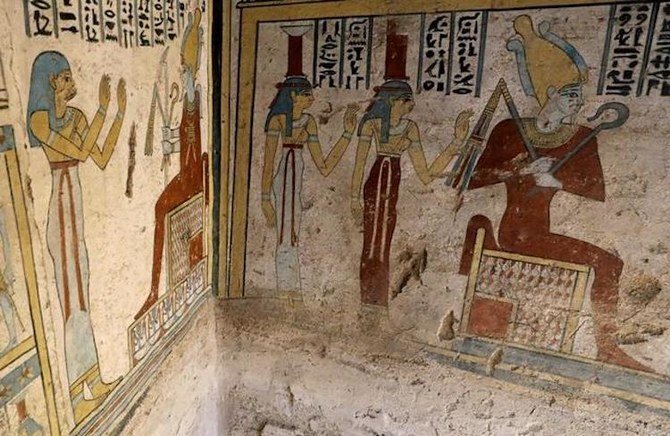Mohammed Abu Zaid
CAIRO: Around 250 tombs dating back around 4,200 years have been unearthed by archaeologists in Egypt.
The country’s archaeological mission of the Supreme Council of Antiquities made the finds in the southern province of Sohag.
The graves, discovered in Sohag’s Al-Hamidiyah cemetery, included “some with a well or several burial wells and other cemeteries with a sloping corridor that ends with a burial room,” the Egyptian Antiquities Ministry said in a statement.
Officials added that the tombs ranged in age from the end of the Old Kingdom to the end of the Ptolemaic period.
The Old Kingdom lasted for around 500 years until 2200 B.C., while Egypt’s Ptolemaic dynasty ruled for 300 years to about the time of Cleopatra’s death in 30 B.C., according to AFP.
Mostafa Waziri, head of the Supreme Council of Antiquities, said one tomb dating back to the Old Kingdom had faint remains of hieroglyphic inscriptions and a chamber for sacrifices.
He noted that the graves were of multiple styles and were discovered at several levels of the mountain, adding that more were likely to be uncovered.
Mohammed Abdel-Badie, head of the Central Department of Upper Egypt Antiquities, said pottery and votive objects had also been found, dedicated to ancient Egyptian deities.
He said some of the pots had been used in daily life and others within the funerary foundation as miniature symbolic deposits, which were small spherical vessels with traces of yellowish paint on the outside.
Small alabaster vessels, animal and human bones, as well as limestone remnants thought to be funerary plates dating back to the Sixth Dynasty, were also discovered, he added.
As part of the project, more than 300 tombs were recorded and documented in the area, which stretches from Nag Al-Sheikh in the south to Al-Khazendarah in the north.
Egypt has announced several major new archaeological discoveries in recent months, in the hope of helping to revive a vital tourism sector battered by a 2011 uprising, ongoing political unrest, jihadist attacks, and the coronavirus disease (COVID-19) pandemic.






















